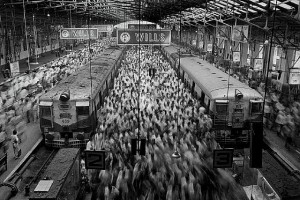Nora was born nearly four years ago, and she was born in New York City. The belly of the beast. Borough of Manhattan, hospital of St. Luke’s–Roosevelt, neighborhood of Whatever the Realtors Call It Heights. She’ll always have that.
I spent my first 18 years in the avowedly suburban confines of Bethesda, Maryland, but I could always take pride in my arrival at the long-gone Columbia Hospital for Women. 21st and L, Northwest! Hey, Henry Rollins was born there! Do my parents know how to pick a cool hospital or what? Honestly, I didn’t think about it much until I’d left the Washington area after high school—but after that, I had a very minor talking point. I was born in D.C. Wherever Nora goes in her life, she will always have been born in New York City.
But, like me, she’s most likely going to grow up suburban. A Jersey girl. Maybe she’ll resent her upbringing, like the young punks of Hanif Kureishi’s fiction, heads full of attitude and no end of anger toward their Pakistani ancestors’ choice, generations earlier, of settling in London and not New York. Fifteen years from now, if Nora’s a college freshman in another city or time zone, she’ll have the choice of telling her friends she’s from New York, or from New Jersey. She’ll quickly find out which one will get her the blank look.
When I lived in Chicago, I’d occasionally get trapped in my car somewhere in the suburbs, out near O’Hare. A graph-paper spread of endless right angles, surprise culs-de-sac—a terrifying hall-of-mirrors of perfectly identical bungalows. So one of the most surprising things about living in the suburbs is how agreeable it’s turning out to be. In a suburban context, Maplewood may seem as misleadingly warm and organic as those enormous, quirky, homey Manhattan apartments you only ever see in network sit-coms, without the hot-plate and the mini-fridge. It’s not necessarily a suitable stand-in for “the suburbs.”
So what got us out here? The usual things. Trying to live within 677 square feet, half of it devoted to an increasing inventory of baby gear. Paying the steep Park Slope Amusement Tax without actually being in any sense amused. We weren’t getting her out to museums, or local Bugaboo-crammed bars. We were stressed beyond measure. Maybe we just weren’t cool enough to stay.
Lord knows we tried, and we discovered the enormous cost of staying at all costs. Between Brooklyn and Maplewood, Rachel and Nora and I moved by mistake to a Remote City Neighborhood I’d Rather Not Name (out of respect for the people living there), an incredibly lifeless place with decent public schools but a deep, gloomy shabbiness. We got twice as much apartment for half as much money, and every moment was a waking nightmare. We were incarcerated there for two years before all the necessary, unrelated details lined up at once, and we still struggle with PTSD, which makes me that much more grateful to be in New Jersey. The only one who came out unscathed, of course, is Nora.
Ten years ago, a friend from my hometown was visiting and admitted to me, “I honestly don’t see how you do it.” New Yorkers who sneer at that kind of thing—You’d never survive, because you’re a wuss and we’re tough—they sneer because they know they themselves wouldn’t survive anywhere else. Just as I don’t think people who’d hate living in New York are weak, I don’t think many suburbophobes are actually too cultural and sophisticated to handle the suburbs. So—should you move to the suburbs? Let me give you a rabbinical answer: That depends. Do you know yourself?




